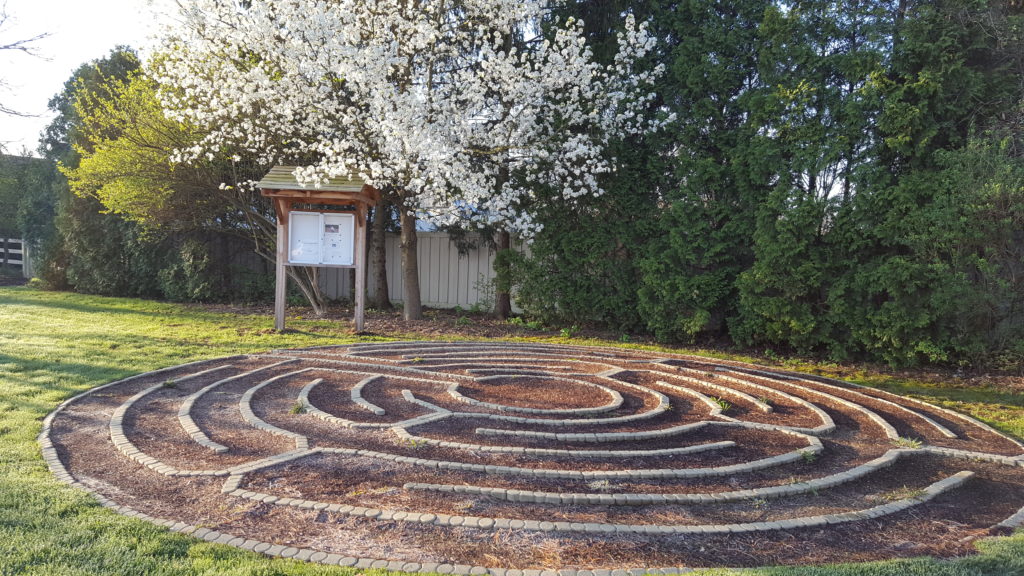The Powell UMC Labyrinth
In the spring of 2015, Jack Mills, a member of PUMC and an Eagle Scout had asked the church if there were any projects that the church might consider for his Eagle Scout project that year and it was suggested to him to create a prayer labyrinth. He began the creative development phase in the Spring of 2015 and in September 2015, jack and his team of scouts, friends and family completed the eight-circuit prayer labyrinth on the east side of the church.
A Short History
The labyrinth is an adaptation of the eleven-circuit labyrinth laid in the floor of Chartres Cathedral around 1220. This labyrinth has only one path that leads to and from the center (unicursal). It is not a maze: there are no tricks and no choices to make. The path winds throughout and becomes a mirror for our lives. It touches our sorrows and releases our joys, so walk it with an open mind and an open heart.
The labyrinth is a powerful symbol of a spiritual journey that was introduced into medieval prayer practice when the traditional pilgrimages to the Holy Land became too dangerous for most travelers. Both in that time, and in our time, people have found it helpful for meditation.
Why use the labyrinth?
The labyrinth invites us to pray as we walk. It can help the mind relax the body, reduce stress, and provide space that helps guide your mind and heart in prayer. The labyrinth only requires that you persist in your journey.
In some ways, the labyrinth is a call to action. It is a spiritual tool for people. It can end in healing, help in releasing grief, help guide through troubled times, and in decision making, illuminate our purpose in life and act as a tool of celebration and thanks. It can be many things for many people. It is a spiritual practice, not a magical tool.

